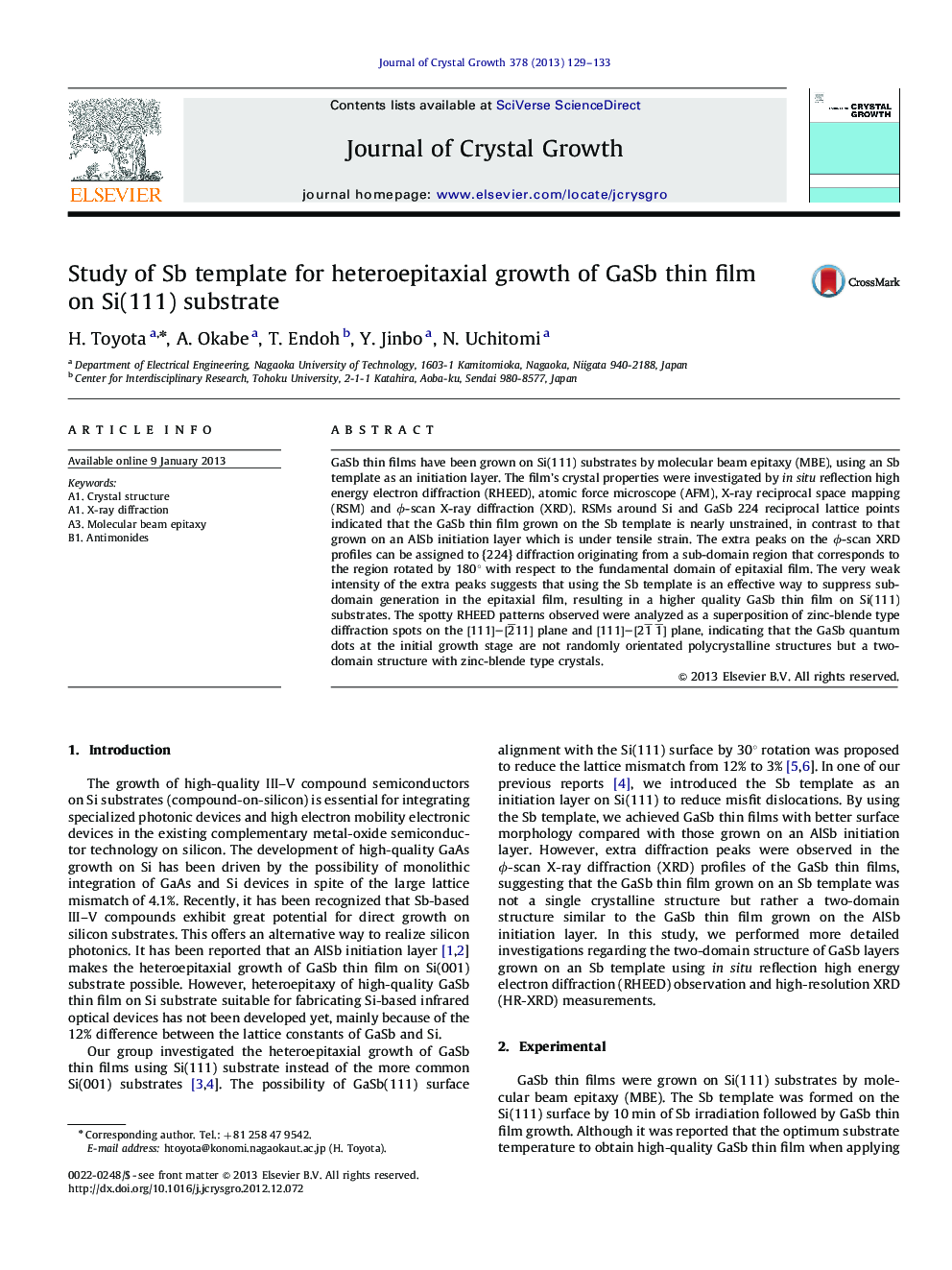| Article ID | Journal | Published Year | Pages | File Type |
|---|---|---|---|---|
| 1790793 | Journal of Crystal Growth | 2013 | 5 Pages |
GaSb thin films have been grown on Si(111) substrates by molecular beam epitaxy (MBE), using an Sb template as an initiation layer. The film's crystal properties were investigated by in situ reflection high energy electron diffraction (RHEED), atomic force microscope (AFM), X-ray reciprocal space mapping (RSM) and ϕ-scanϕ-scan X-ray diffraction (XRD). RSMs around Si and GaSb 224 reciprocal lattice points indicated that the GaSb thin film grown on the Sb template is nearly unstrained, in contrast to that grown on an AlSb initiation layer which is under tensile strain. The extra peaks on the ϕ-scanϕ-scan XRD profiles can be assigned to {224} diffraction originating from a sub-domain region that corresponds to the region rotated by 180° with respect to the fundamental domain of epitaxial film. The very weak intensity of the extra peaks suggests that using the Sb template is an effective way to suppress sub-domain generation in the epitaxial film, resulting in a higher quality GaSb thin film on Si(111) substrates. The spotty RHEED patterns observed were analyzed as a superposition of zinc-blende type diffraction spots on the [111]–[2¯11] plane and [111]–[21¯1¯] plane, indicating that the GaSb quantum dots at the initial growth stage are not randomly orientated polycrystalline structures but a two-domain structure with zinc-blende type crystals.
► GaSb/Si(111) heteroepitaxial growth employing an Sb template was performed. ► XRD measurements suggested a two-domain structure of GaSb thin films. ► The Sb template suppressed stacking faults and resulted in better thin film quality. ► RHEED analysis revealed a two-domain ZB structure at the initial growthstage.
